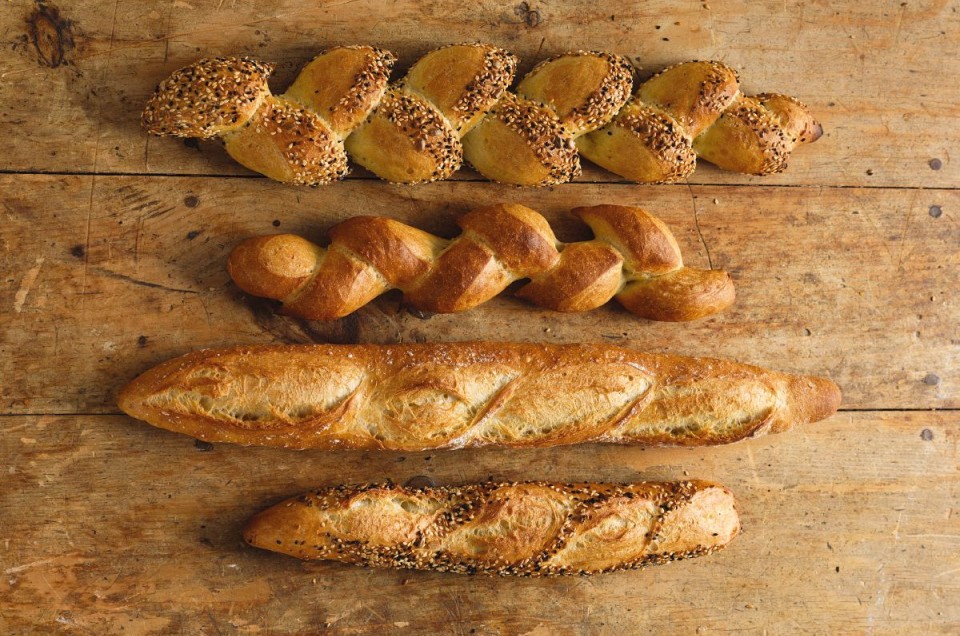Nice to see some bakers! Hopefully……my 16kg bag will be here today. I’m getting withdrawal symptoms now.
pc_light - is that a loaf or a cake? if it’s a loaf I think something went wrong ![]() it could be for a number of reasons. Doesn’t matter though, it’s still lovely fresh or toasted/heated. Or maybe it’s a different kind of bread entirely? soda maybe?
it could be for a number of reasons. Doesn’t matter though, it’s still lovely fresh or toasted/heated. Or maybe it’s a different kind of bread entirely? soda maybe?
It can be frustrating making bread, I have been there lol - but stick with it please, it’s very rewarding for you and friends/family - especially now. People love a fresh loaf or some buns! I used to make my Nan ‘Chelsea Buns’ regularly, but since she died a few years ago, i cannot face or want to make them ![]()
I have been baking for many years now, and since it’s the best recipe ever, I thought I would share with you all.
I have tried hundreds of recipes - this one every time comes out fantastic.
I don’t hand knead the first bit, i do it it in a Kenwood chef. 1 minute on lvl 4, 4 minutes on level 1. Done.
The second knead i do by hand. DO NOT skip the butter bit, it takes the longest, but makes a difference.
Ballymaloe white yeast bread - by Darina Allen
The bread that was made in my home was always soda bread, so it wasn’t until I went to school in Cathal Brugha Street in Dublin that I learned the skill of making white yeast bread. Later I brought it to Ballymaloe House and they’ve been making it there ever since. This dough can be used to make rolls, loaves, breadsticks and all manner of bread shapes. .
Makes 2 x 450g (1lb) loaves (or 1 big one)
425ml (¾ pint) lukewarm water
20g (¾oz) fresh yeast
700g (1½ lb) strong white flour, plus extra for dusting
2 teaspoons salt
10g (½oz) sugar
25g (1oz) butter
Egg wash and poppy or sesame
Seeds for topping (optional)
2 x loaf tins 12.5cm (5in) x 20cm (8in)
Put 150ml (¼ pint) of tepid water into a Pyrex measure. Crumble in the fresh yeast and leave in a warm place for about 2–3 minutes. Sieve together the flour, salt and sugar in a large, wide mixing bowl. Then rub in the butter (looks like tiny breadcrumbs) and make a well in the centre. Pour in the yeast mixture and most of the remaining lukewarm water. Mix to a loose dough, adding the remaining water or a little extra flour as needed.
Turn the dough onto a lightly floured work surface, cover and leave to relax for about 5 minutes. Then knead for about 10 minutes or until smooth, springy and elastic (if kneading in a food mixer with a dough hook, 5 minutes is usually long enough). Put the dough into a large bowl and cover the top tightly with clingfilm. Yeast dough rises best in a warm moist atmosphere; 27°C (80.5°F) is optimum, but a slower rising is preferable to one that is too fast.
After about 1½–2 hours, when the dough has more than doubled in size, knead it again for about 2–3 minutes to redistribute the yeast in contact with the dough so it will have a more even crumb. Cover and leave to relax for a further 10 minutes.
Shape the bread into loaves, plaits or rolls, then transfer to a baking tray and cover with a light tea towel. Leave to rise again in a warm place, until the shaped dough has again doubled in size (about 20–30 minutes).
Preheat the oven to 230°C/450°F/gas mark 8.
The bread is ready for baking when a small dent remains if the dough is pressed lightly with the finger. Brush with water and dust with flour for a rustic looking loaf or brush with egg wash and sprinkle with poppy or sesame seeds for a more golden crust.
The bread will rise a little further when it goes into the oven – this is called ‘oven-spring’. Bake for 25–35 minutes, depending on size. When baked, the bread should sound hollow if tapped underneath. Leave to cool on a wire rack.







